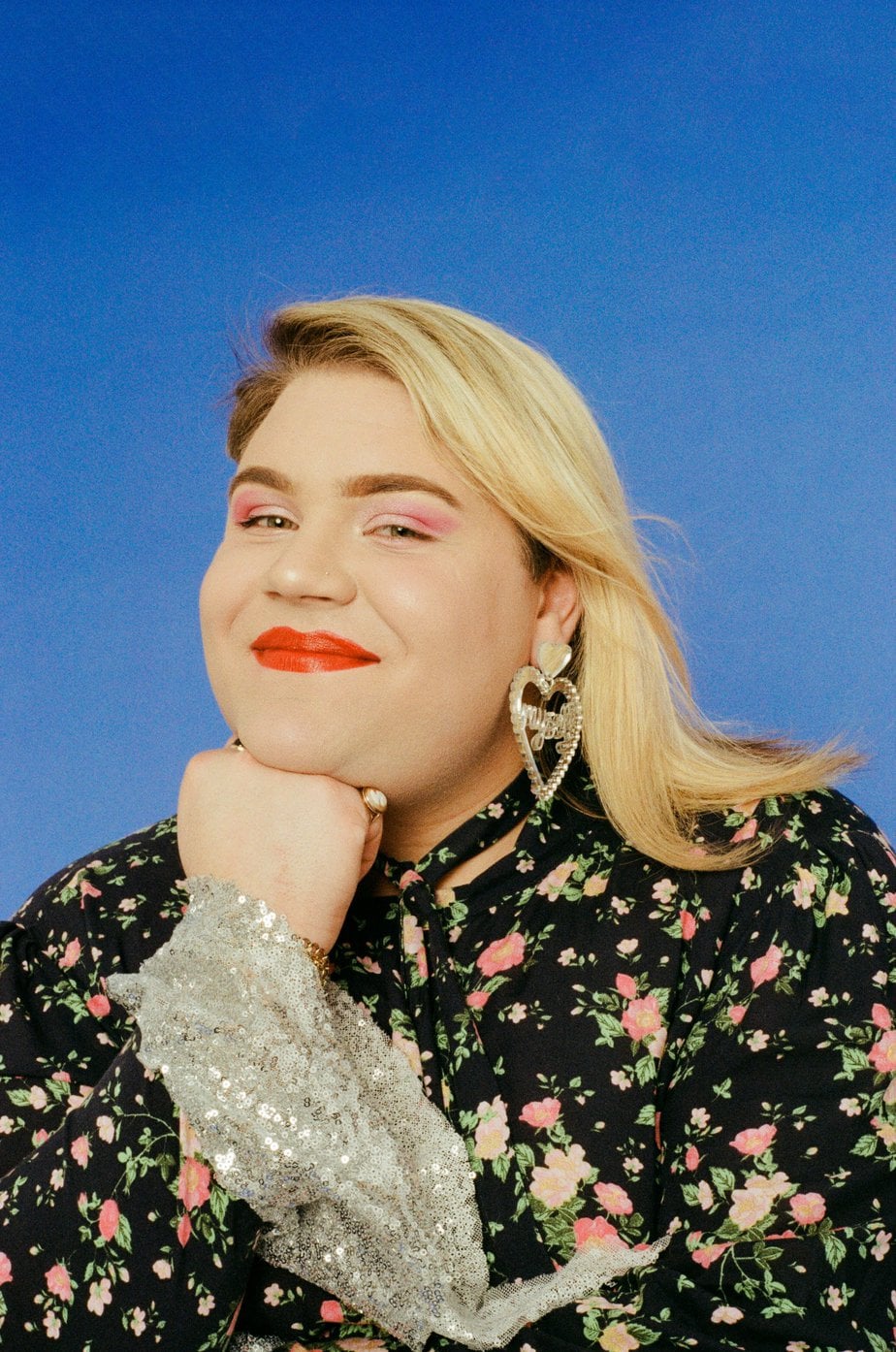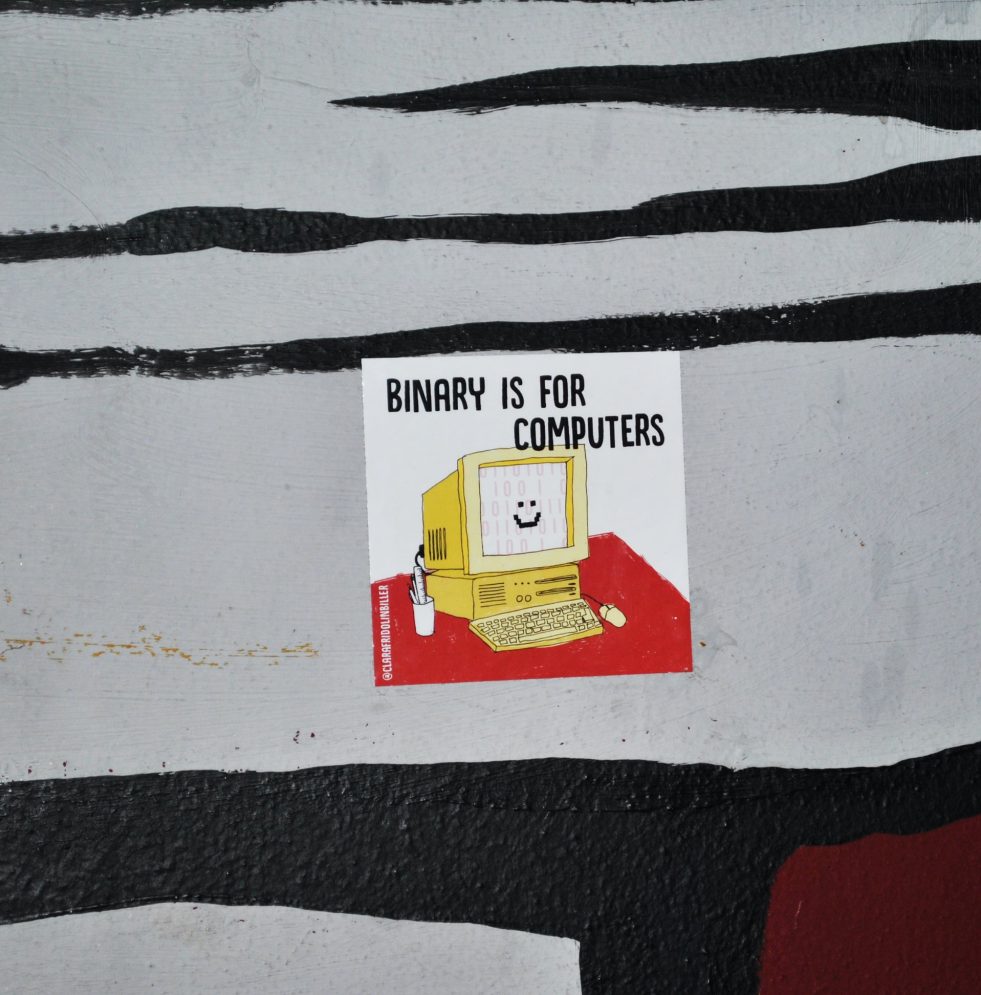What Does Enby Mean?
Enby is a shortened colloquial way to say non-binary. Very literally it is a phonetic way of saying “N” and “B”. The reason we don’t use “NB” is that this abbreviation already has an established life in Black communities as a shorthand for “non-Black”. For an example of the use of NB in this original context, check out this article on Huffpost.
What Is An Enby?
Enby is the same as non-binary, and not, as some think, a sub-category of the term. Non-binary and enby refers to a person whose gender, or connection to gender as a concept, does not align or connect with the gender binary. As well as being a gender identity, non-binary can also act as an umbrella term that many different gender identities can fall under, such as genderfluid, genderqueer, agender and neutrois, to name just a few. There are also many gender identies that correlate with non-binary concepts that are culturally specific, such as Two-Spirit, which is an umbrella term created to cover a multitude of non-binary identities belonging to certain indigenous nations of North America and Australia.
Sources suggest that the abbreviated term enby was likely birthed on Tumblr around 2013. It is less a term to define people, and instead, more of a person-based way of describing relationship to gender.
Is Non-Binary The Same As Transgedner?
In short, no! Trans is a gender identity and another umbrella term, encompassing people whose gender identity differs from, or does not sit comfortably within, the gender and or the sex they were assigned at birth. Not all non-binary people are transgender but some are. It is a very person specific situation with a great deal of nuance.
What Is The Gender Binary?
To more fully grasp the world of non-binary, enby, and many other iterations, it can be helpful to gain some deeper understanding of what the gender binary is.
Binary as a term indicates an either/or decision between two choices. Yes or No. When we’re born, medical staff often use physical body markers to assign a binary sex: Male or Female. Certain physiological characteristics, perhaps most notably genitalia, are often used societally to determine our sex, despite the fact that sex is actually determined by a variety of different elements, including chromosomes and hormones, and can also be influenced by environmental factors. Sex is also a sociological construct that is not binary in nature. About 1.7% of the population is born with Intersex traits, and the unhelpful enshrinement of the false sex binary in popular thought and medical theory and practice has lead to its violent imposition on people who do not conform to this binary, both through invasive and unnecessary medical procedures on young chidren and infants and through societal marginalisation.
This is different to gender. Sex and gender do cross over, interact and sometimes inform one another, but mostly they are different things. Gender is the socially constructed roles, behaviours, expressions and identities of people. It is closely tethered to culture, being a cultural element of human fabrication, but there can be scope for it to be expressed individually from person to person.
So, we are clear that there is a difference between gender and sex. Society is less clear on this difference. It uses an outdated model of binary sex evaluation and then often places gender expectations on people according to this false binary. This means that some people – including those who make the rules, and shouty people on Twitter – think our bodies define our gender roles.
This is inaccurate and dangerous. Gender is essentially a set of guidelines. You could think of it like Lego. With the instructions that come in the box, you could build the set as it says. But, if you threw those instructions away, you could build anything you wanted – there would be so many options you could build. This is what living beyond the gender binary feels like to me.
So can you define non-binary?
Non-binary or enby by definition is defined by each individual who uses that term to define their gender. So this begins to confuse people because there is no universally applicable answer – just as, when you think about it, there is no universally applicable definition for any gender, seeing as how an understanding and expression of gender is informed by the individual in their unique context of time, place and community, to name just three factors.
However, there is a way you can grasp the concept that demonstrates the unique identity that enbies have.
Many of us have learned to associate gender with colour. In Europe and the US, female is often represented by pink, and male with blue – unless of course we go back to pre-WWII, when the complete opposite was the norm. Either way, this pink/blue dichotomy suggests only two choices of gender expression, which is inaccurate and unhelpful.
If you are familiar with photoshop, then you will know what the hue wheel is. If not, essentially it is a wheel with all the colours visible to the human eye in one circle, so you can pick the desired shade of colour.
Now picture that wheel as a spectrum of possible ways of expressing gender. Masculine and feminine have their societally constructed clear points in blue and pink. Enbies, however, can sit anywhere on that wheel, creating a unique blend of gender expressions for themselves. Perhaps one enby in this analogy is more aligned with a dark purple colour, whilst another would feel more represented by a buttercup yellow. They’re both still enbies, and neither is more or less valid than the other.
It is a freeing way to look at gender when you realise that there is actually a huge spectrum of options, not just the two little dots of pink or blue we’ve been offered for so long.
Are there Different Ways To Identify As An Enby?
As we have explored, it is clear that there are infinite ways to exist as an enby. Certainly, every enby person that you meet will have a different approach to their own gender identity. This is one of the defining parts of being non-binary – finding joy in being exactly who you want to be!
That being said, there are some identity terms that people in the enby community have adopted. There is an infinite variation in these identities as well but sometimes we can see certain themes that consistently come up. It’s also important to note that these identities are only useful insofar as they feel aligned with an individual enby’s experience. They are not tools for anyone other than the enby themselves to categorise, designate, or otherwise make unhelpful and potentially harmful assumptions about people.
Femme
This is someone who is non-binary, but with a behavioral existence that often sits in language that would typically be associated with “traditional” notions of femininity (I am speaking of femininity in a particularly US/Eurocentric framework). “Femme” is a word with a long and queer history – with a few of those contexts seperate from a correlation to non-binary identity. Originating in the French word for “woman” it has developed over time to mean several different things, although always relating to and sometimes challenging concepts of femininity. A femme identity can be explored through clothing, makeup, hairstyles, speech patterns, physical gestures, ways of movement and much more. Some people even feel more connected to femme as a political identity. Femme has no direct connection to sex or assigned gender and can be an identity that anyone may connect with.There are no rules or limitations for how you connect with or express your gender.
Masc
Masc is sometimes a non-binary identity, sometimes not, that involves an existence connected to behavior and internal contextualization typically associated with more “traditional” notions of masculinity. Like “femme” when I say “traditionally masculine” I am speaking in a specific European/US cultural context. Masc, just as Femme, has links and roots in dyke and Lesbian culture, in the instance of Masc as connected to Butch, and the very important role that many lesbians played in the rights won for the LGBTQIA+ community (Google “Act Up” to explore the way so many Lesbians progressed rights for AIDs sufferers in 80s and 90s United States). Again, as with Femme Enbies, this isn’t just a cateory for a particular gender or person with a certain sex assigned to them at birth. Anyone can be masc as an enby.
There is also a chance that someone who presents in a way that you see as femme may present in a more masc way the next time you see them! That is the beauty of being an enby – there are no rules! The identity and expression of non-binary is all about being freed from having to conform to one or other set ways of being, and instead being open to the possibility of fluidity of expression, connected more essentially to oneself than to societal notions of how one should or should not be.
Trans Non-Binary
Someone who is both transgender and non-binary. Some people who transition socially (with name changes, gender marker changes, and aesthetic presentation ) and/or medically (with hormones and or gender affirming surgery) may also identify as non-binary. Transition is often an assumed stage in being trans, particularly by people who are not trans themselves, and it is important to remember that transition of any kind has nothing to do with the validity of an individual’s transgender identity and existence. Whether or not someone modifies their appearance after they have started to describe themselves as non-binary and or as trans has nothing to do with the validity of their gender.
Agender
Agender an identity that falls under the umbrella of non-binary identities. In this term, the ‘a’ means ‘without’ or ‘not’, so agender means without gender. This is how some enbies may identify and there is no singular gender expression that is connected to agender people. They may look or act in an infinite variety of ways. This is just as valid as the ways we discussed before this.
It is important to acknowledge that every non-binary person you meet will be different. This doesn’t mean you can refute their existence because it doesn’t fit your narrow view of what non-binary means. The way someone identifies is how they identify – so respect that!
Certainly twenty years ago we weren’t seeing these conversations across certain mainstream media outlets. It may seem new or odd to you, but this sense of newness is only reflective of your perspective . Non-binary people have always been here! If you want to find out more about the wonderful world of being non-binary, you should read my debut book, the Book of Non-Binary Joy!
If you only remember one thing from this article, let it be this; there is no right or wrong way to be an enby. There are no rules – and that is the point! Non-binary people don’t owe you gender conformity!

Ben (they/them) is a writer, speaker, content creator, LGBTQIA advocate, and soon to be author! They have worked with major brands such as Amazon Prime, Oliver Bonas, Matalan and many more. They uplift and educate through media; with their website benpechey.com, The Happy Place podcast, and legendary Instagram Stories. They have had words in print and online for Cosmopolitan, Women’s Health, The Guardian and many more.

